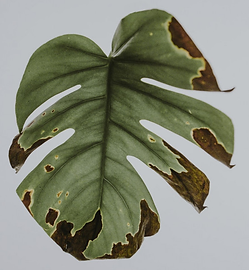Hardy chrysanthemums are just what their name implies, very hardy and vigorous plants. They rarely get diseases or pests. However, if not treated well, they can succumb to fungal or bacterial diseases and pests. In this post I will explore some common chrysanthemum pests and diseases and how to cure your plants of these maladies. Read on to learn how to keep your mums beautiful and bright. For more information on Chrysanthemums, click How to Grow Chrysanthemums.
(Some of the links within this post are affiliate links on which I receive a small compensation from the sale of certain items at no extra cost to you)
(As an Amazon Associate I earn from qualifying purchases.)
Mum Diseases
Fungi are the easiest diseases to spot. It is usually evident on the leaves, stems, and/or blooms.
I. Fungus/ Spotted Brown and Yellow Leaves
If your chrysanthemum has spotted brown and yellow leaves, you probably have a fungus. Fungi love to grow in warm, wet areas. Once the fungus has found this area, it begins forming tiny, brown, fungus leaf spots similar to a bulls-eye. It will then progress to a brown splotch on the leaf which will eventually die and drop off. The spores of the fungus stay in the soil and wait for another warm, wet area to attach.
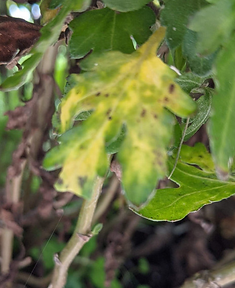
Treatment
Since the spores thrive in wet areas with poor air circulation. there are a few things you can do to treat and prevent the fungus from forming.
1. Begin by cutting off the diseased area and removing it from the soil.
2. Water your plants in the morning so the heat of the day and sunlight will dry any excess water from the leaves.
3. Spray your plant with an earth friendly product (below is a list of products that are earth, child, and pet friendly). Or try a homemade solution of baking soda (bicarbonate of soda), 1/2 teaspoon to one gallon of water.
II. Fungus/ Powdery Mildew/ White or Gray Powder
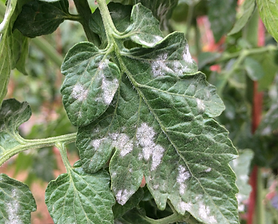
This mildew forms in very high humidity areas. It looks like a white or gray powder covering the leaves of the plant. There are ways to prevent this from happening to your mums.
Prevention
1. Do not water the plant in the evening. This prevents the leaves from drying thoroughly for long periods of time, allowing the mildew to more easily transfer to other leaves.
2. Plant the mum where it will get 4 to 6 hours of sunlight.
3. Plant the flowers far enough apart for good air circulation.
4. Prune back during the growing season to aid in circulation.
Organic Solutions
1. Spray a solution of hydrogen peroxide and water, 9 parts water to 1 part hydrogen peroxide, once a week.
2. Choose a product from below as an alternative to the organic solution.
III. Fungus/ Rust/ Rust Color
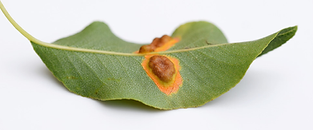
There are many different varieties of rust and are all plant specific. Therefore, if you have rust on your chrysanthemums it will not spread to other plants. It appears as a rust colored fleck which turns into a bump. It usually presents itself on the underside of the leaf.
Prevention
1. Water in the morning.
2. Do not overwater your plant.
3. Allow for good air circulation.
4. Remove infected leaves as soon as they appear. Dispose properly in a plastic bag and do not put them in your compost pile.
Treatment
Spray with a good fungicide like Neem Oil (from Amazon).
IV. White Mold
White mold is hard to identify and once the plant has contracted this mold, it will probably die. It appears like white fluffy growth on the stems of the plant. The leaves will eventually wilt and die off.
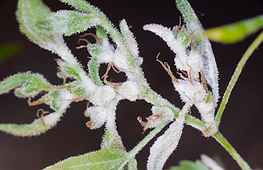
The mold will first appear white but then turn to hard, black pencil like structures on the diseased part of the plant.
The best solution for white mold is prevention since there is no known treatment for this disease.
Prevention
1. Do not overcrowd your plants.
2. Water in the morning.
3. Do not plant your flowers in warm, moist areas.
4. If the plant has succumbed to white mold, it’s best to dig it out and throw it away (not in the compost bin).
Mum Pests
Many chrysanthemum pests are very tiny. The most common pests are mites, aphids, and leaf miners. There are a few things you can do to prevent these nasty bugs from attacking your mums.
I. Aphids
Aphids appear as tiny black dots, cause distortion to the plant, and spread a virus. They are soft bodied insects that suck the sap from the foliage and leave behind a white honeydew-like secretion along the leaves and flowers.
To rid the plant of aphids, spray the plant with a strong stream of water 2 to 3 times per week. If this does not kill the aphids, try natural predators. Purchase ladybugs to eat the insects. If this fails, dig out the plant and dispose of it. It is very difficult to treat a plant that has an infestation and it can spread to others. Thoroughly clean all tools used on your mums.
II.Leaf Miners
Leaf miners leave a tell-tale trail underneath the leaves. This winding trail is formed by the larvae of the leaf miner. It is pale green to brown in color.
Prune off and destroy any leaf (or stem) that is infected with leaf miner. Also, remove any stems or leaves that have fallen to the ground. Blasts of water and insecticidal soaps may rid the plant of leaf miners.
III. Mites
Mites are more like tiny spiders that suck the sap from the plant. They are quite difficult to detect. You can try exposing them by putting a piece of paper under the plant stem and shaking the stem. The mites should fall onto the paper.
A mum with a small infestation of mites will have tiny yellow dots that look dusty, almost appearing similar to a small spiderweb. For a heavier infestation the plant will have withered and discolored blooms along with more webs on the blooms and the undersides of the leaves.
If you catch the mites before they have done much damage, spray the plant with a forceful stream of water 3 times. They can also be controlled with insecticidal soaps.
However, if the plant is too far gone, it is best to dig out the plant and rid your garden of it. Do not put the remains in a compost pile for the mites will spread throughout the organic material.
Best Non-Toxic Products to Help Control Diseases and Pests
Our earth is finite. We as a human race have to do all we can to preserve our glorious planet. When deciding how to control diseases and pests in your garden I highly recommend using non-toxic products that are safe to adults, children, pets, and other good insects and animals in your garden. Below is a list of products that was developed by avid gardeners who are environmentally conscious.
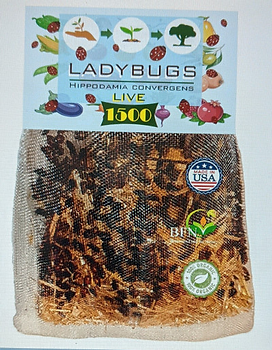
Lady Bugs are a natural and easy way to control pesty aphids. They arrive live and are a great way to introduce interesting information to children. Make gardening a learning experience!
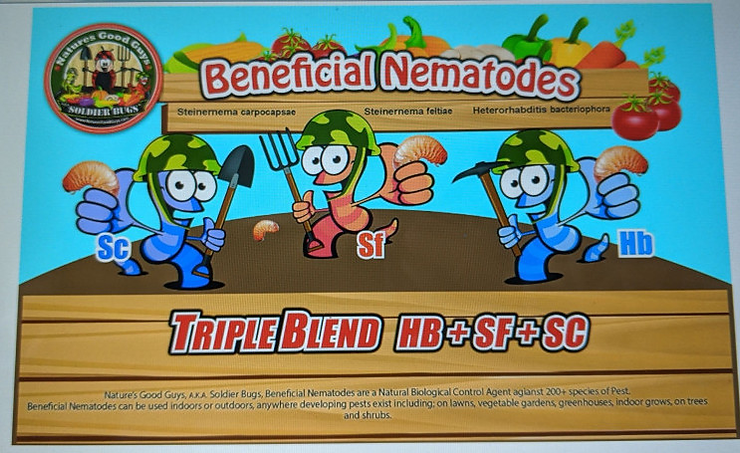
An all natural way to prevent diseases and insects from taking hold of your plants. This product is live when it is delivered and kills up to 200 wood boring and soil dwelling insects.
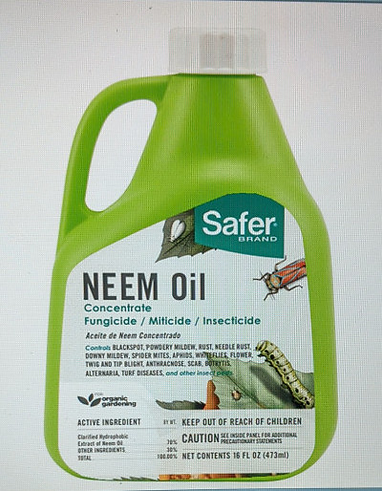
This product is a go to product for most fungal diseases and pests. It not only kills the pest, but its eggs and larvae as well. This product is in compliance for organic gardening.
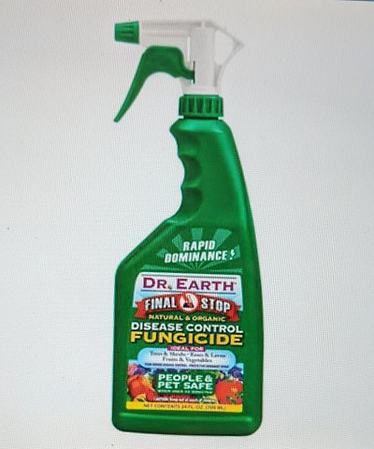
This product is 100% natural and naturally hand crafted. Some of its ingredients include rosemary oil, clove oil and peppermint oil. It controls certain diseases, mold and fungi.
Chrysanthemum Pests and Diseases
As you can see pests and diseases can attack your chrysanthemums and garden plants. Be vigilant in observing these infestations at the outset. Follow my instructions and use earth-friendly products to create a beautiful healthy garden!
I hope you learned a thing or two from this post. Please share it with others and leave a comment below. I’d love to hear from you!
Happy Gardening!
Nina

